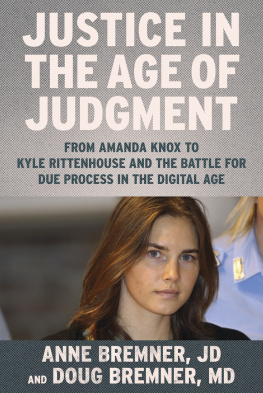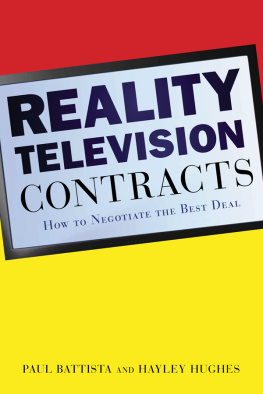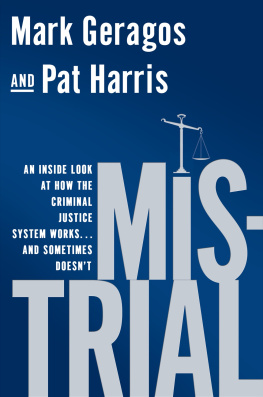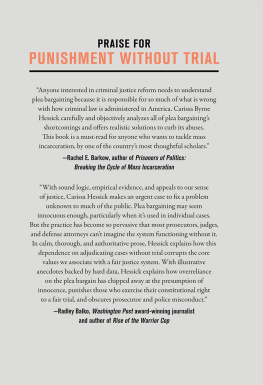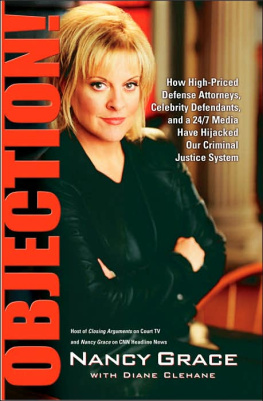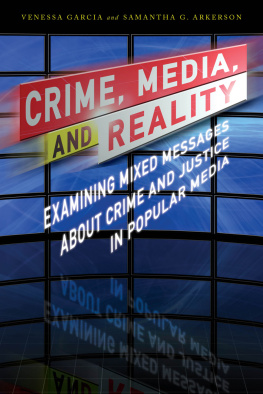Thank you for buying this ebook, published by NYU Press.
Sign up for our e-newsletters to receive information about forthcoming books, special discounts, and more!
Sign Up!
About NYU Press
A publisher of original scholarship since its founding in 1916, New York University Press Produces more than 100 new books each year, with a backlist of 3,000 titles in print. Working across the humanities and social sciences, NYU Press has award-winning lists in sociology, law, cultural and American studies, religion, American history, anthropology, politics, criminology, media and communication, literary studies, and psychology.
TV OR NOT TV
TV OR NOT TV
Television, Justice, and the Courts
A TWENTIETH CENTURY FUND BOOK
Ronald L. Goldfarb
NEW YORK UNIVERSITY PRESS
New York And London
Copyright 1998 by The Twentieth Century Fund
All rights reserved
The Twentieth Century Fund sponsors and supervises timely analyses of
economic policy, foreign affairs, and domestic political issues. Not-for-profit
and and nonpartisan, the Fund was founded in 1919 and endowed by Edward A. Filene.
BOARD OF TRUSTEES OF THE TWENTIETH CENTURY FUNDMorris B. Abram
H. Brandt Ayers
Peter A. A. Berle
Alan Brinkley
Jos A. Cabranes
Joseph A. Califano, Jr.
Alexander Morgan Capron
Hodding Carter III
Edward E. David, Jr.
Brewster C. Denny
Charles V. Hamilton
Matina S. Horner
Lewis B. Kaden
James A. Leach
Richard C. Leone
P. Michael Pitfield
Richard Ravitch
Arthur M. Schlesinger, Jr.
Harvey I. Sloane, M.D.
Theodore C. Sorensen, Chairman
Kathleen M. Sullivan
James Tobin
David B. Truman
Shirley Williams
William Julius Wilson
Richard C. Leone, President
Library of Congress Cataloging-in-Publication Data
Goldfarb, Ronald L.
TV or not TV : television, justice, and the courts / Ronald L.
Goldfarb.
p. cm.
Twentieth Century Fund book.
Includes index.
ISBN 0-8147-3112-0 (acid-free paper)
1. Conduct of court proceedingsUnited States. 2. Free press and
fair trialUnited States. I. Title.
KF8725.G65 1998
347.7305dc21 97-45289
CIP
New York University Press books are printed on acid-free paper,
and their binding materials are chosen for strength and durability.
Manufactured in the United States of America
10 9 8 7 6 5 4 3 2 1
For H.M.R.
Always my friend
A popular Government, without popular information, or the means of acquiring it, is but a Prologue to a Farce or a Tragedy; or, perhaps both. Knowledge will forever govern ignorance: And a people who mean to be their own Governors must arm themselves with the power which knowledge gives.
9 Writings of ]antes Madison 103 (1910)
A trial is a public event. What transpires in the courtroom is public property.
Justice William O. Douglas,
Craig v. Harney, 331 U.S. 367 at 374 (1947)
CONTENTS
All illustrations appear as an insert following
2. The Free Press, the Fair and Public Trial:
A Constitutional Conundrum
4. A Thing Observed, a Thing Changed:
What Is the Impact of Television on Trials?
FOREWORD
Courtroom drama, both fictional and based on real trials, became commonplace on television almost from the inception of the medium. This should not come as a surprise: trials have long fascinated audiences. In their own time, the trials of Aaron Burr for treason (twice) and Henry Thaw for the murder of Stanford White, the Scopes monkey trial, and the trial of the kidnapper of the Lindbergh baby riveted the nation when they took place and continued to fascinate, especially when presented in dramatic form in the theater, on film, and on television. More recently, the national obsession with the televised O. J. Simpson murder trial, and the subsequent cottage industry of books and commentary, startled even the most careful observers of popular culture. Of course, cable televisions Court TV, which provides a steady supply of more prosaic cases, had indicated that there is an apparently insatiable audience, eager to peek through the camera into courtrooms around the nation.
The televising of trials, however, has not been without controversy. A substantial proportion of the bar and the judiciary continue to resist granting such media access. Television cameras, in fact, are still barred from federal courtrooms, and many states are equally strict. The list of issues that trouble those who oppose televising trials is lengthy, involving many complex arguments. But it is fair to say that the most important all focus on the potential for television to affect the behavior of judges, lawyers, and witnesses in a case. In other words, the central question is, Does the camera affect the outcome?
Ronald Goldfarb, himself an attorney, brings unusual credentials to the task of exploring the pros and consand the implicationsof televising trials. He understands that the heart of the matter is the potential conflict between the constitutional right of the public to know and the press to report and the constitutional protections meant to ensure a fair trial. He makes clear that the differences among experts and judges on this issue do not fit neatly into our normal categories of liberal or conservativesupporters and opponents of television in the courtroom fall into both ideological camps. Goldfarbs book also provides a necessary historical perspective on the current state of the argument. He explains how opinion has shifted over time and how particular trials have affected, at least in the short run, the balance of forces on the issue. His work is comprehensive, discussing both the case for and against cameras in the courtroom and then providing his own thoughtful point of view about what should be a sensible national policy in this area.
For the Twentieth Century Fund/Century Foundation, Goldfarbs study continues a long tradition of exploring the interaction of media and journalism with government and public policy, most recently in our Perspectives on the News series. The issue of universal television coverage of courtrooms cuts across all of these areas. In fact, one of the central questions about such trials relates directly to the election process for important state and local officials; after all, many judges and district attorneys stand for election. (In thinking about this aspect of the issue, keep in mind that public performance at criminal and civil trials became a routine way to develop a political following in the Roman Republic.) Televised trials, therefore, represent political photo opportunities for candidates. As such, they may affect not only the way candidates conduct themselves during a trial but also the outcome of some future elections. The obvious counterargument is, Can it be bad for the public to know more about how officeholders actually perform in the jobs to which they were elected?
More generally, as Goldfarb makes clear, one cannot rationally discuss the camera in the courtroom issue without finding common ground on just what the public interest is in this area. As the pages that follow explain, however, there is no simple answer to this question. For the Fund, then, this book has a characteristic that we seek in all our publications: a quest to understand the issues involved and to assess the best course of action for the nation. While he fairly represents the case on behalf of opponents of court television, Gold-farb concludes with a powerful brief on behalf of universal access.


